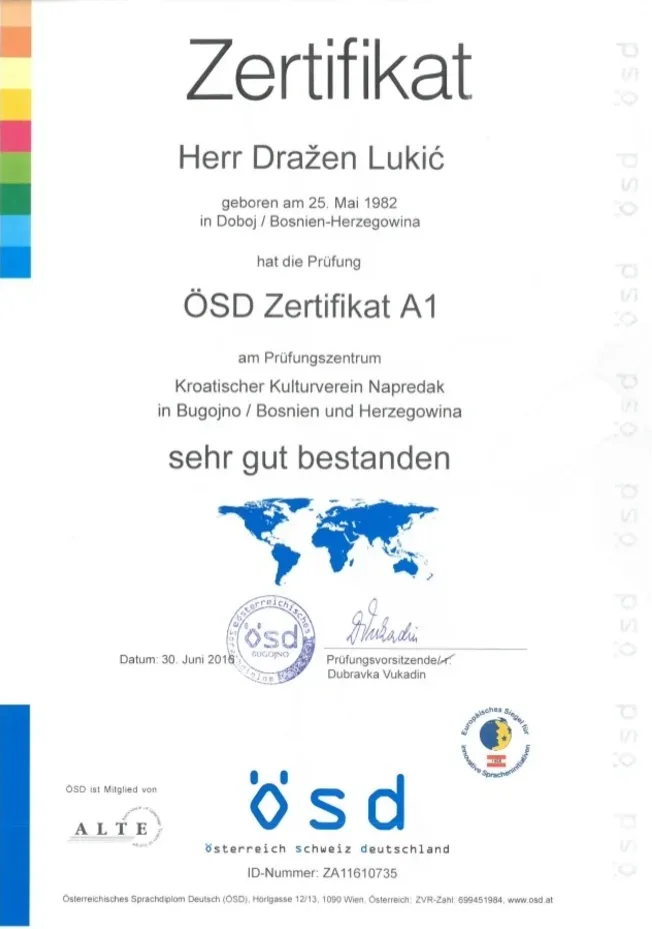Comprehending sprachzertifikat a2 : A Comprehensive Guide for German Learners
In the landscape of language certifications, the ÖSD B2 accreditation stands apart as a considerable turning point for learners of the German language. Attaining proficiency at this level opens various avenues, both academically and professionally, while likewise enriching cultural understanding and personal advancement. This post aims to offer a useful introduction of the ÖSD B2 accreditation, detailing its significance, structure, preparation methods, and frequently asked concerns.
What is the ÖSD B2 Certification?
The ÖSD (Österreichisches Sprachdiplom Deutsch) B2 accreditation is a main language certification that examines intermediate efficiency in the German language. It is especially acknowledged in Austria, Germany, and Switzerland, making it a valuable property for those planning to study or work in these nations.
At the B2 level, students are anticipated to:
Comprehend the essences of intricate texts on both concrete and abstract topics.
Communicate with fluency and spontaneity with native speakers.
Produce clear, detailed texts on a wide variety of subjects associated to their interests.
Why is the ÖSD B2 Certification Important?
Academic Opportunities: Many universities in German-speaking countries require a minimum of B2-level efficiency for admissions, particularly for courses taught in German.
Professional Advantages: Employers frequently look for candidates with acknowledged language qualifications, and B2 proficiency demonstrates the ability to communicate effectively in professional settings.
Cultural Integration: Achieving this level can deepen one's understanding of German culture, society, and subtleties of daily language.
Structure of the ÖSD B2 Exam
The ÖSD B2 assessment consists of 4 primary elements: Listening, Reading, Writing, and Speaking. Each area assesses various competencies within the language ability set.
1. Listening Comprehension
In this section, test-takers listen to various audio clips such as conversations, news reports, and conversations. deutschkurs österreich are required to respond to questions that measure their understanding of content, tone, and implications.
2. Checking out Comprehension
This part includes different written materials like short articles, ads, and e-mails. Prospects need to show their ability to comprehend the context and crucial concepts, in addition to translate different kinds of texts.
3. Composing
Prospects are asked to write a text based upon a specific topic, frequently needing structured arguments and meaningful thinking. This might consist of composing essays, reports, or official letters.
4. Speaking
The speaking evaluation usually consists of two parts: a monologue and a discussion with an inspector. Test-takers need to communicate efficiently, express viewpoints, and react to questions clearly.
Scoring System
Each part is scored separately, and to pass, prospects typically should attain a typical score throughout all areas. The grading criteria focus on language proficiency, coherence, fluency, and the capability to engage in discussion.
Preparation Strategies for ÖSD B2
Getting ready for the ÖSD B2 exam can be a requiring yet satisfying endeavor. Here are some efficient techniques that can boost your preparation:
1. Acquaint Yourself with the Exam Format
Review previous exam documents to comprehend the kinds of concerns and tasks involved.
Tape yourself during practice speaking sessions to enhance fluency and articulation.
2. Develop Your Vocabulary
Produce vocabulary lists based upon typical styles for the B2 level, such as Work, Environment, and Health.
Use flashcards and language apps to strengthen knowing.
3. Practice Listening Skills
Listen to German podcasts, news stations, and audiobooks that include a series of subjects and accents.
Participate in routine discussion practice with native speakers, either face to face or online.
4. Take Mock Exams
Mimic exam conditions by taking practice tests within the allocated time frame.
Examine your efficiency to recognize areas for improvement.
5. Join Study Groups
Collaborate with fellow students to practice speaking and exchange resources.
Engage in conversations that challenge your understanding of complex subjects.
Common Questions about ÖSD B2
FREQUENTLY ASKED QUESTION

Q1: How long is the ÖSD B2 certification legitimate?
A1: The ÖSD B2 certificate does not end, however it is a good idea to keep your language skills upgraded through consistent practice and usage.
Q2: What resources are recommended for preparing for the ÖSD B2 exam?
A2: Books particularly created for B2 preparation, online courses, language exchange platforms, and official ÖSD practice products are recommended for effective study.
Q3: Where can I take the ÖSD B2 exam?
A3: The ÖSD B2 exam can be taken at numerous language schools, universities, and ÖSD assessment centers worldwide. It's advisable to inspect for set up dates in your area.
Q4: What if I stop working the exam?
A4: Candidates can retake the ÖSD B2 exam as sometimes as needed to achieve the desired outcome. However, it's often helpful to require time to enhance language skills before reattempting.
Conclusion
The ÖSD B2 certification represents an essential step in the journey of mastering the German language. By understanding the structure of the exam, employing efficient preparation methods, and using available resources, learners can enhance their proficiency and achieve their language goals. Eventually, the benefits of obtaining the B2 certificate extend beyond academia and work, enriching the cultural and social experiences of those who make every effort to discover German. Embarking on this journey is not simply about passing an exam; it's about welcoming a language that opens doors to brand-new chances and experiences.
